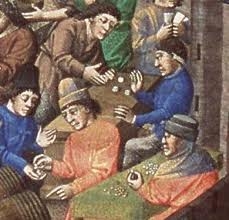There is some debate over what to water next after the Tree.
Ultimately, it depends on whether your focus is on food crops or on the landscape, the ease of replacement, and the expense. I value my herbs because I cook with them, and I also want a small vegetable garden to eat from this summer (food prices will be higher). So, I plan on sacrificing bedding plants and annuals in favor of my herbs, strawberries and vegetables. I'll use mulch, shade cloth and drip irrigation to get the most from the water I have available to me.

The Lesser Nobles – Shrubs.
Typically shrubs planted within the past two years will require irrigation during drought, thought not as much as newly planted shrubs. During severe drought conditions, plantings up to five or six years of age may also require supplemental water.
The Merchant Class – Perennials and Established Trees and Shrubs.

Established shrubs or trees (three years or more in the ground) can be watered deeply about once a month, especially if they are showing signs of stress. Deep, thorough irrigations from spring through summer can be enough to keep most trees and shrubs alive when water is in short supply. Many tree and shrub species will drop leaves or wilt under severe water shortage but will survive. Under-watered fruit trees probably will produce less, if any fruit, but will also survive. Once water shortages are lifted, these trees will again leaf out and produce fruit.
The Serfs – Established Lawns, Groundcovers, Containers, Bedding Plants and Annuals.

Annuals and herb plants are a lower priority because they require the most watering to keep alive and can be replaced inexpensively or can be replanted next year when adequate water is available.
P.S. Remember, The Tree is King.
